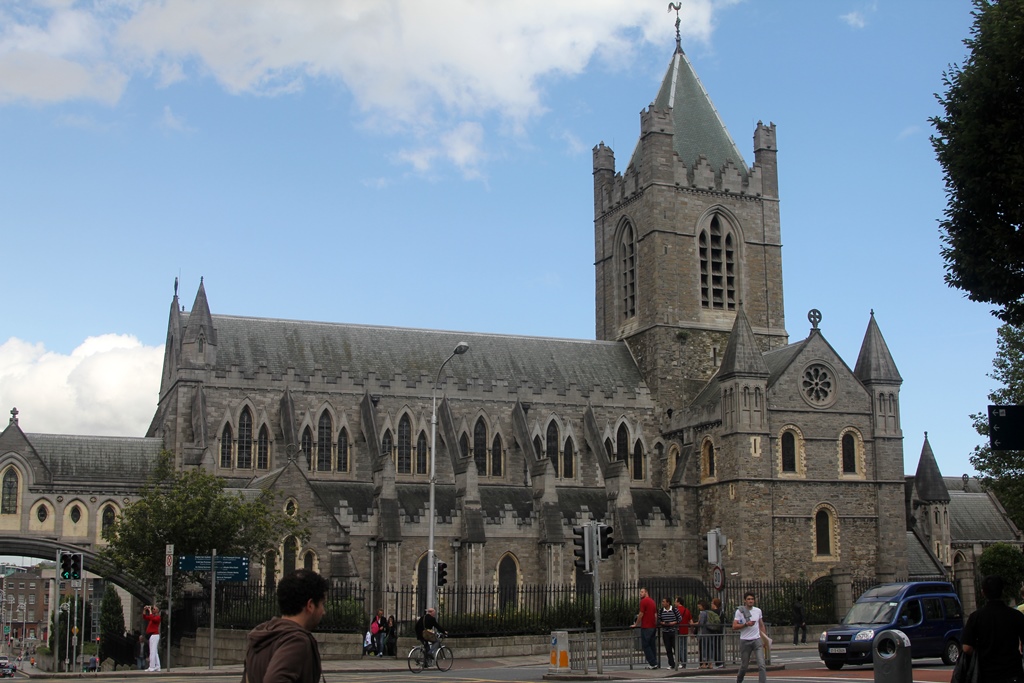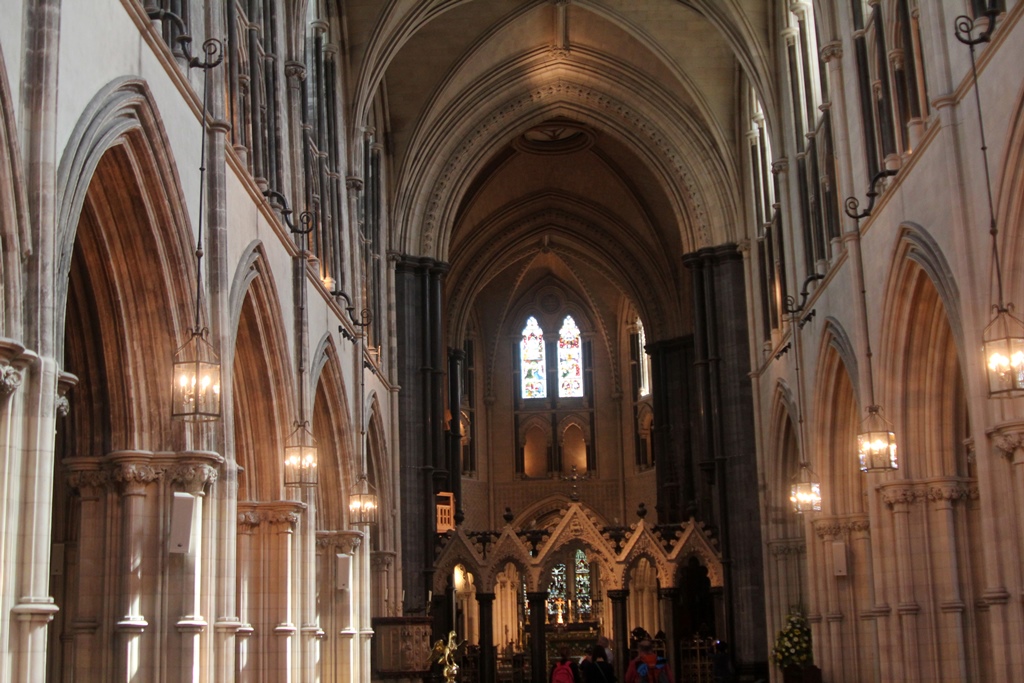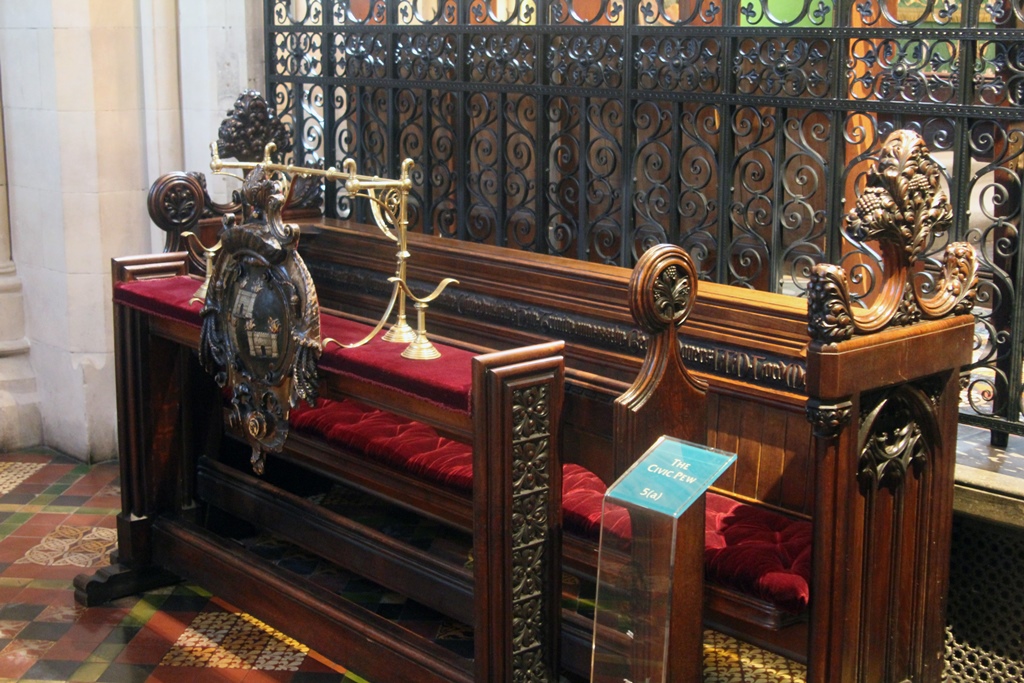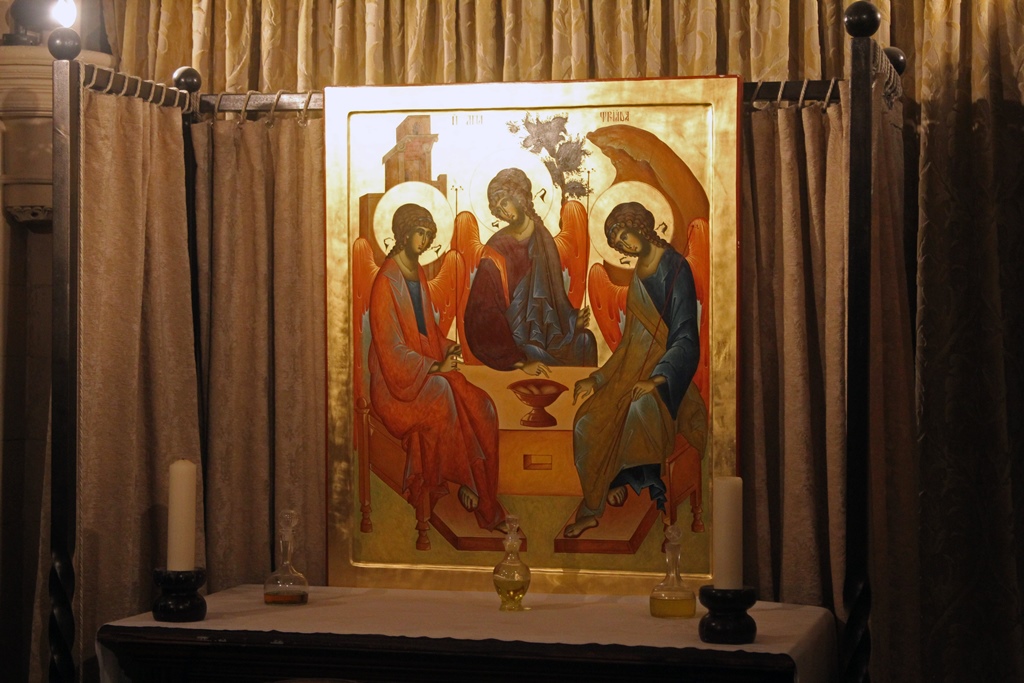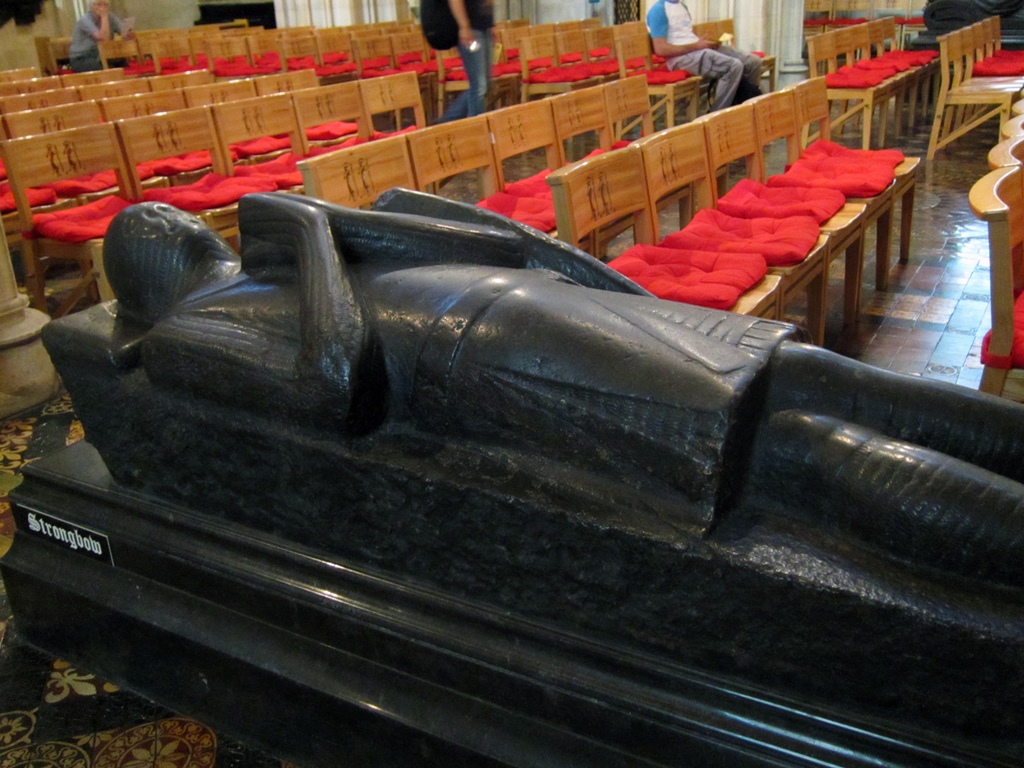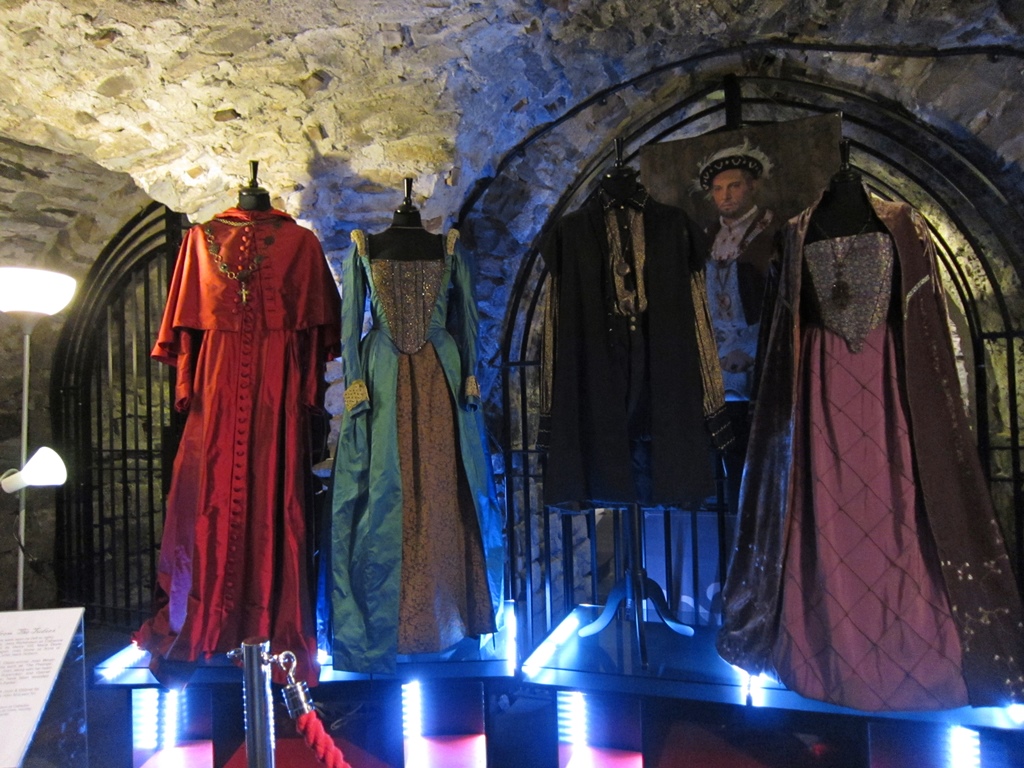Christ Church Cathedral
Christ Church Cathedral,
one of the oldest buildings in Dublin, looks to be in
pretty good shape, or so we were thinking as we approached it near the end of
our short walk from Dublin Castle. The windows all looked intact, there didn't
seem to be any missing stonework, and the stone itself didn't appear to be
particularly weathered. Uncanny, really. And only possible because we were
looking at the latest incarnation of the cathedral, whose most recent renovation
took place in the 1980's. The cathedral was first built around 1030, under
Dublin's king at the time, Sitric Silkenbeard. At this time the church was a
wooden structure, and it remained that way until it was rebuilt in stone by
invading Normans, starting in the 1180's, with improvements and expansions
taking place over the next couple of centuries. In 1562 the cathedral's south
wall collapsed when its foundation gave way, and much of the church had to be
rebuilt (the north wall survives to this day, but has a lean to it). In the
1870's a major renovation was performed on the cathedral, after it had fallen
into disrepair (and had even been declared unsafe for a time). The bell tower
was rebuilt, the choir was truncated to the length it had before a 14th Century
remodeling, and a baptistery was added. A Synod Hall, also with a bell tower,
was built across the street, and a covered footbridge was added to link it to
the cathedral (the Synod Hall is now occupied by the
Dublinia Museum, which we
didn't have a chance to visit).
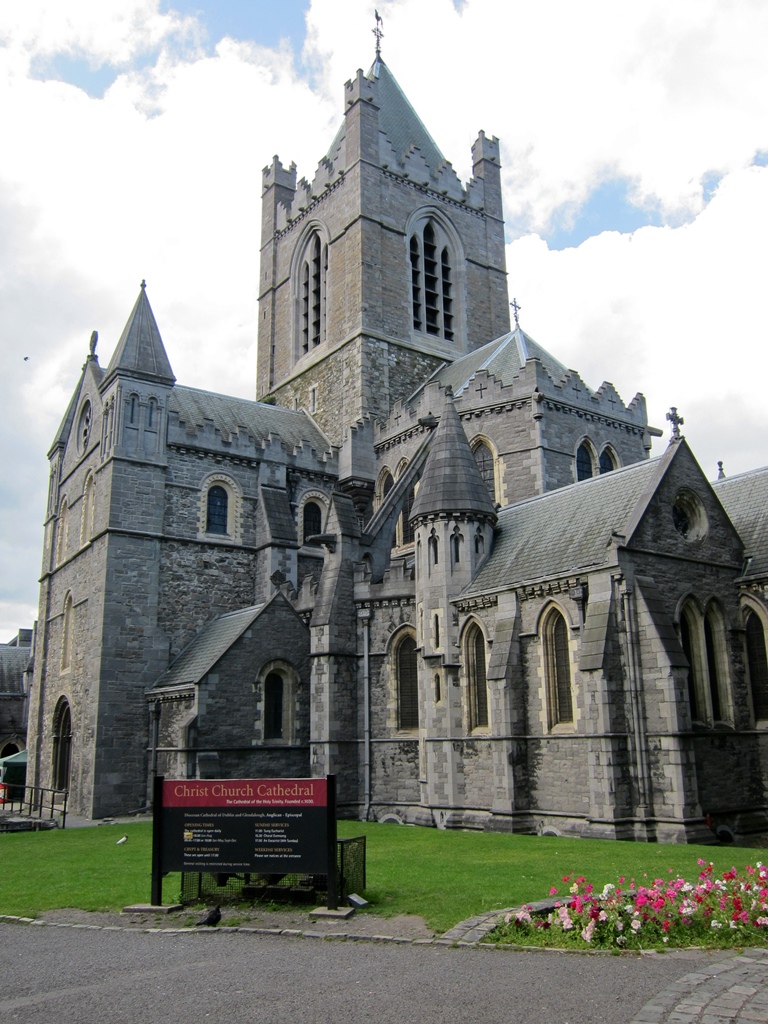
Christ Church Cathedral
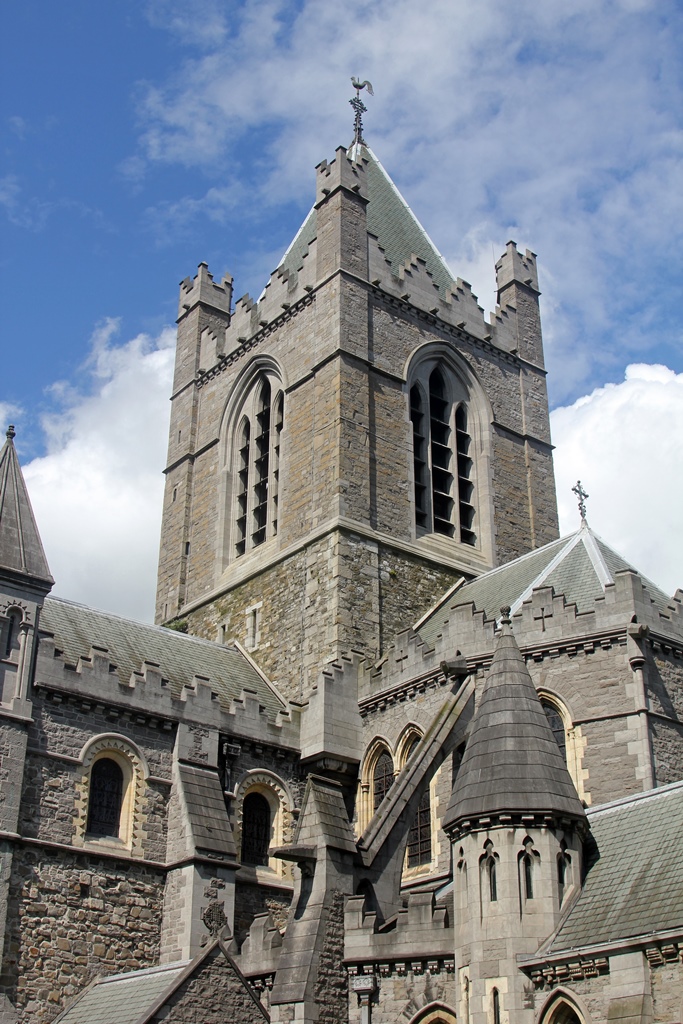
Main Tower

Christ Church Cathedral
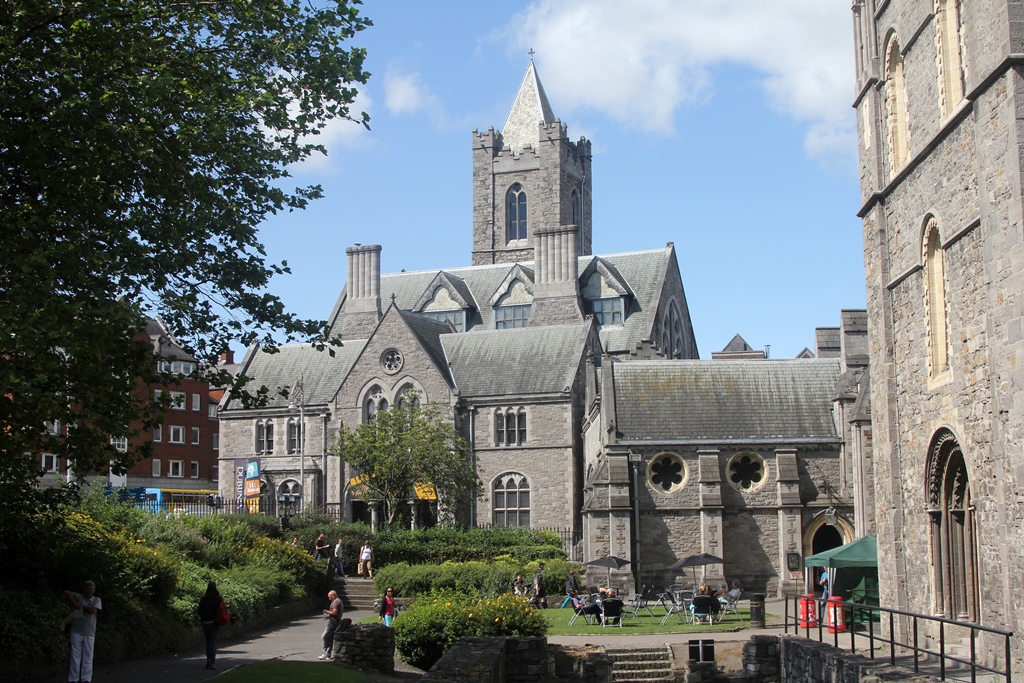
Dublinia Museum
The inside of the cathedral was also in pretty good condition, again mostly
because of the 19th and 20th Century renovations.
Inside the Cathedral
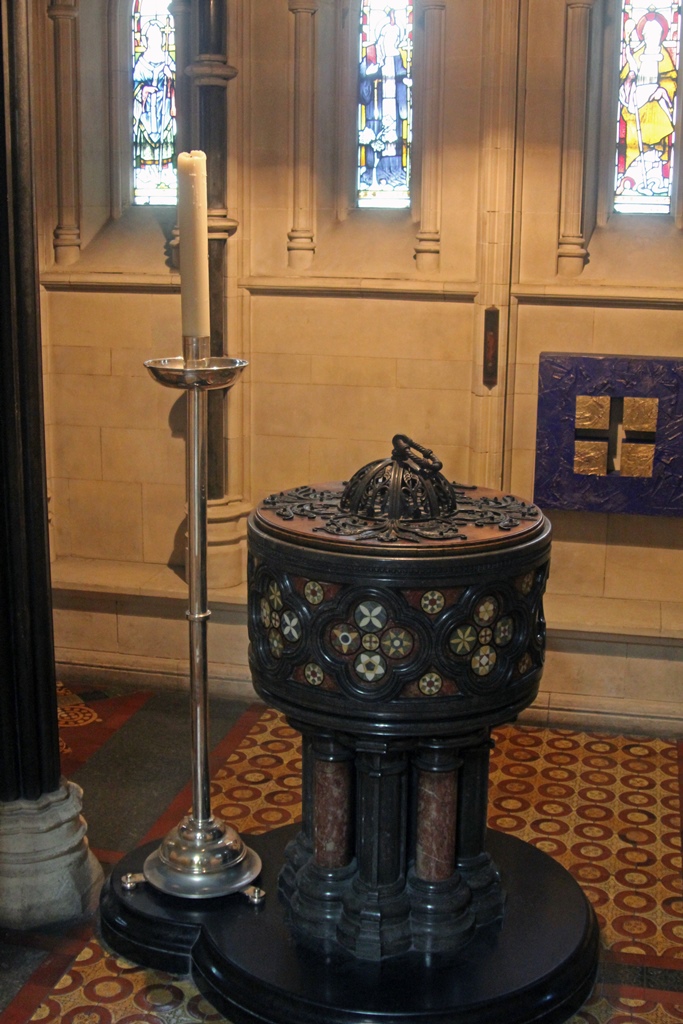
Baptistery (19th Century)
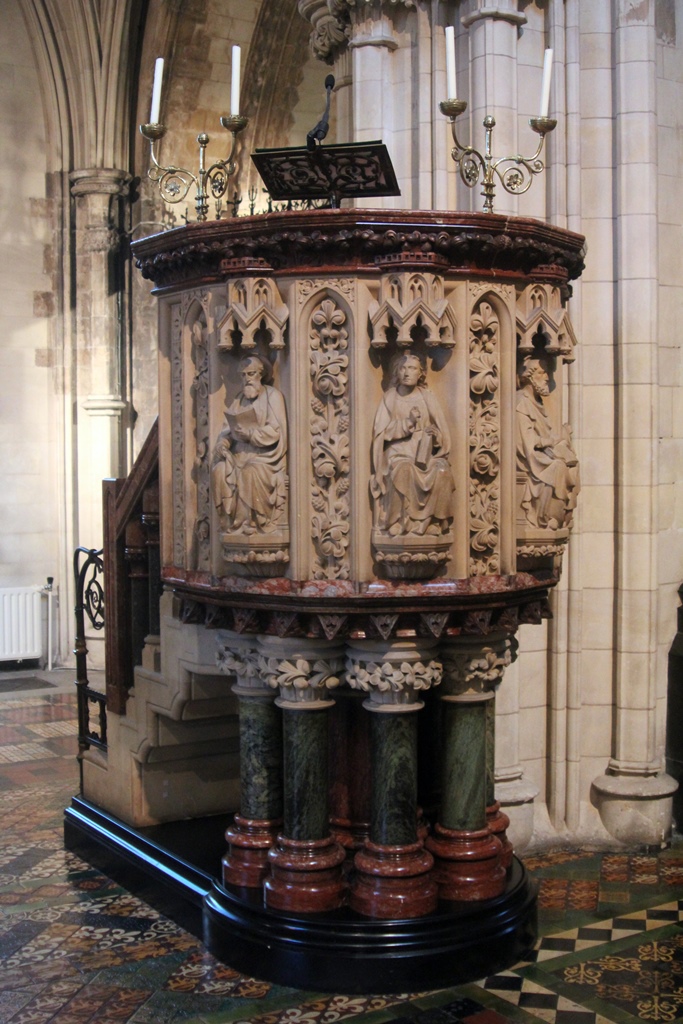
Pulpit (also 19th Century)
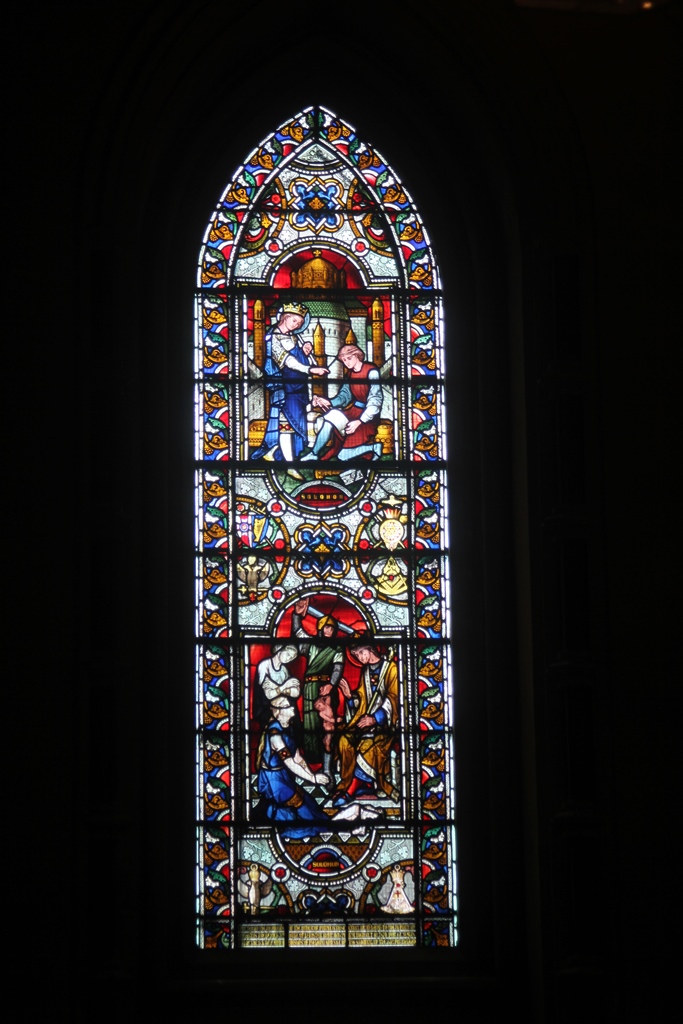
Stained Glass
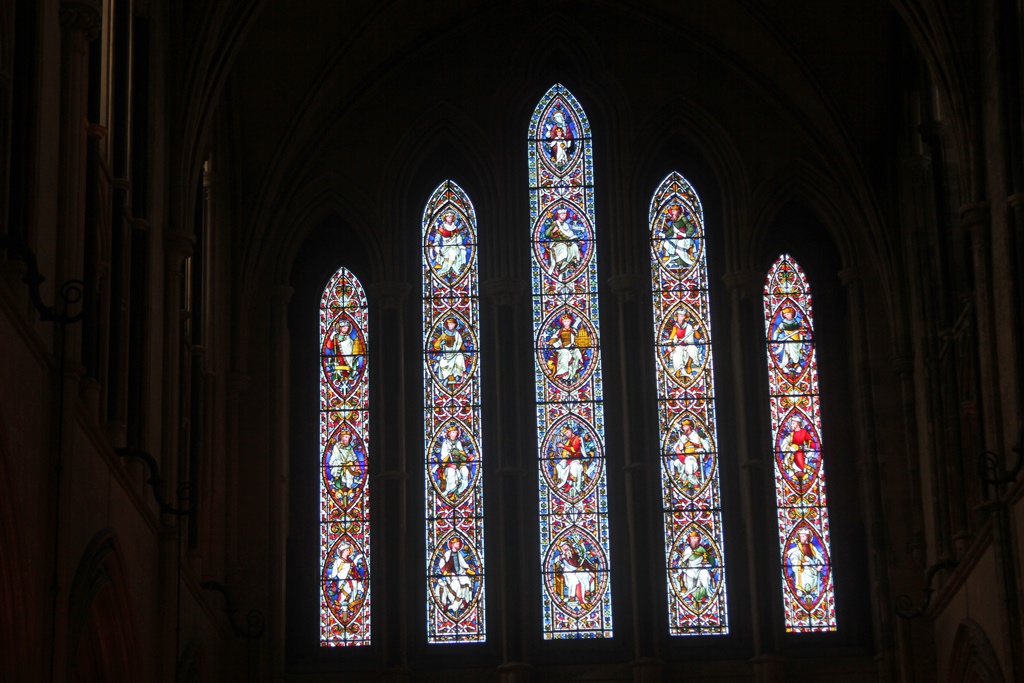
Stained Glass
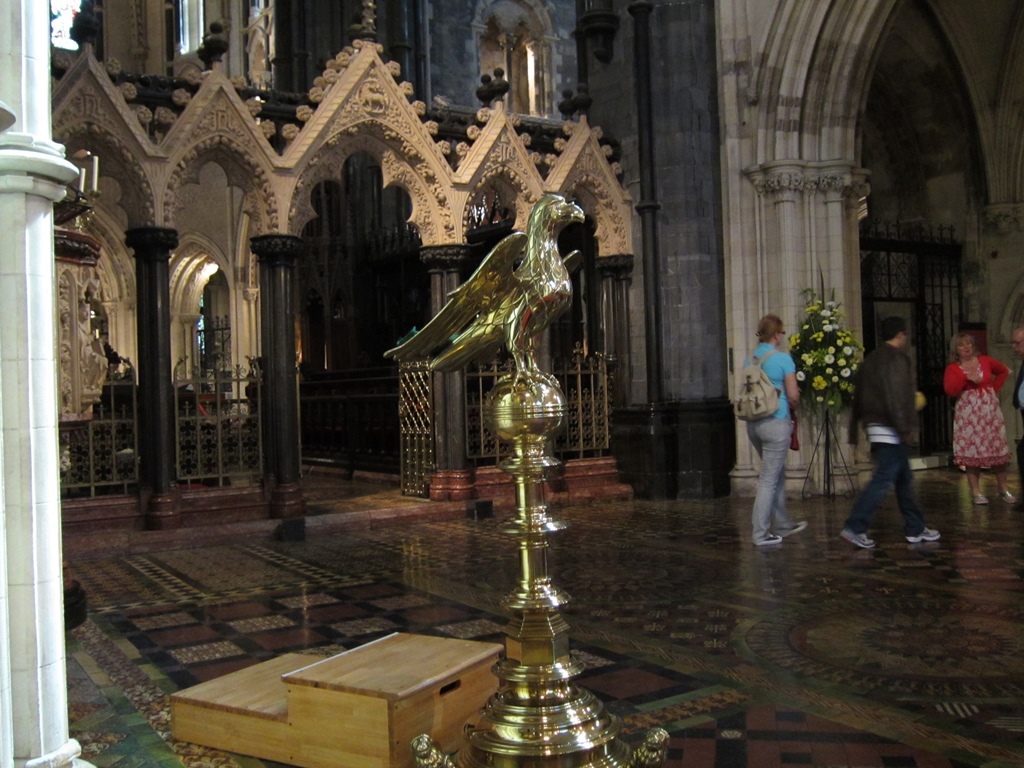
Eagle Lectern and Choir Screen (both 19th C.)
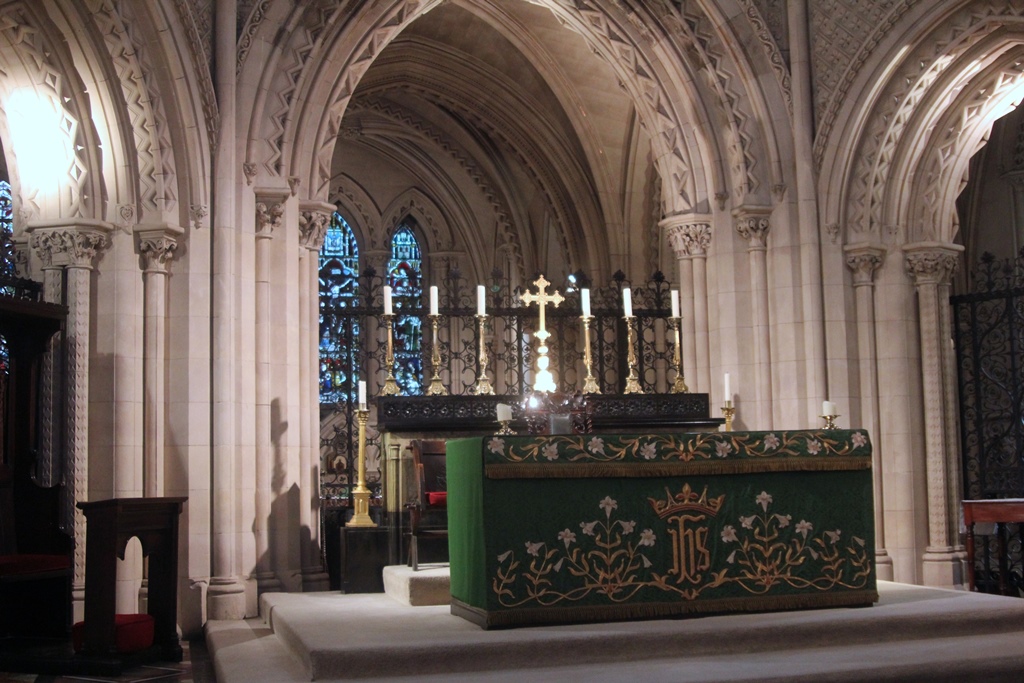
Main Altar
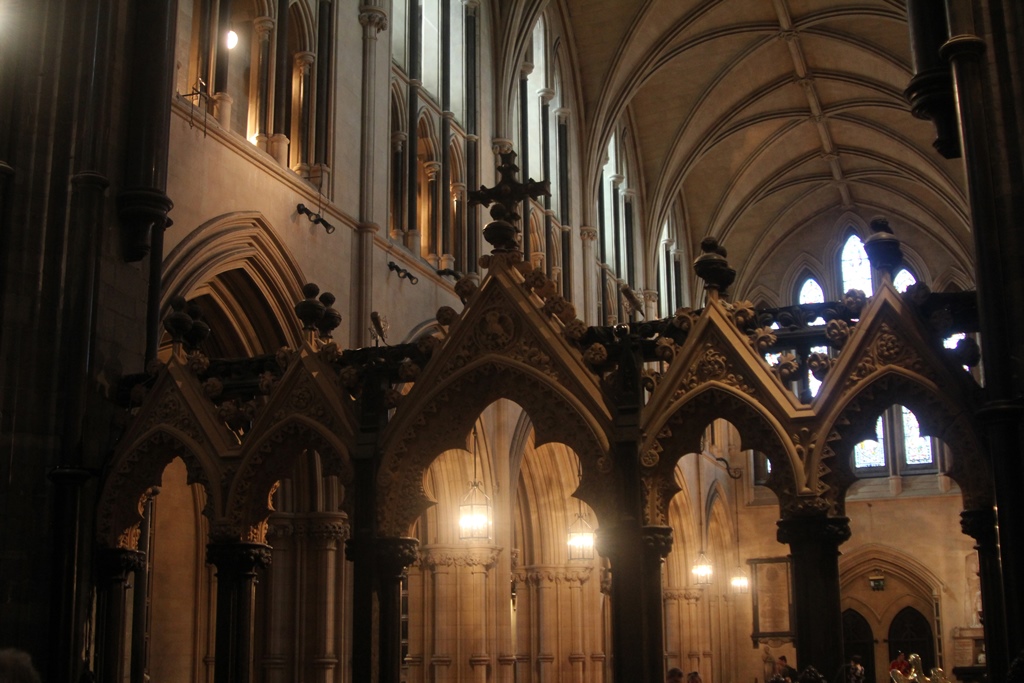
Choir Screen
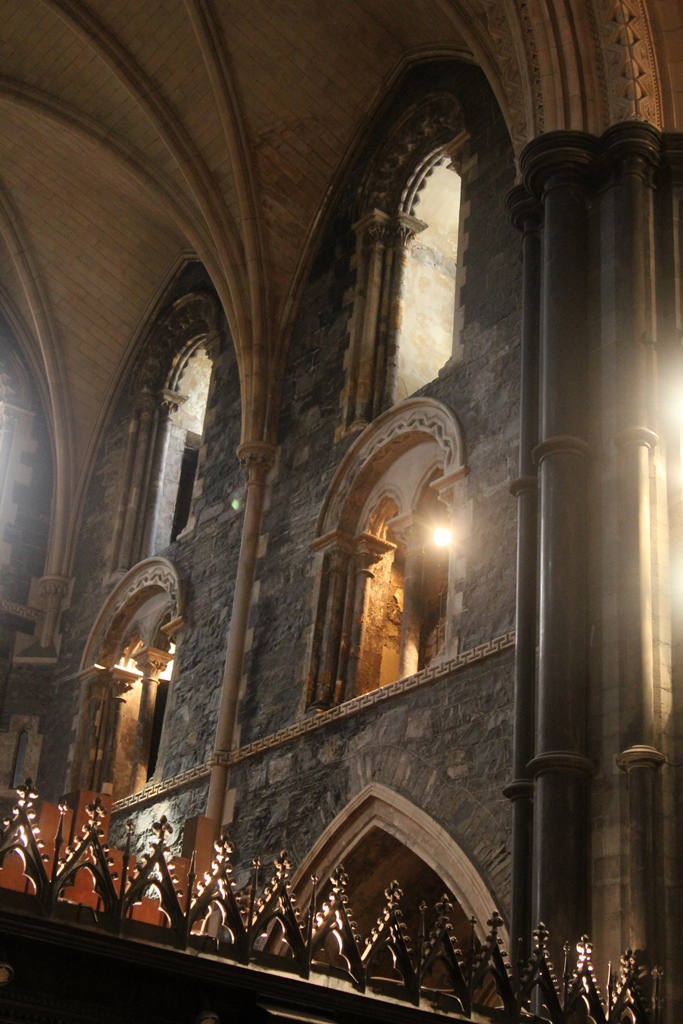
Walls and Windows
In the north aisle is found the Civic Pew, which is reserved for use by the
Lord Mayor and other city officials. In the south aisle there is a State Pew,
reserved for national officials.
The Civic Pew
There is a painting on display which looks like a pre-Renaissance painting with
a gold background. This painting, known as the Trinity Icon, was actually done
in 2008 in the style of a Russian icon, by a Romanian-born artist and scholar
(and Dublin resident) named Georgetta Simion. The painting depicts three
angels, apparently sitting down for a meal.
The Trinity Icon (Georgetta Simion, 2009)
One of the Normans who successfully invaded Dublin in the 12th Century, and
who helped fund the original stone version of the cathedral, was Richard de
Clare, 2nd Earl of Pembroke and owner of the cool nickname Strongbow.
Strongbow died in 1176 from an infection and was eventually given a tomb in
Christ Church Cathedral. Unfortunately this tomb was destroyed in the 1562
collapse, and Strongbow was assigned a replacement tomb. This tomb displays
an effigy of a reclining knight from the 15th Century (originally created
for a now-unknown local knight) and a coat of arms which doesn't have any
apparent connection with Strongbow. But it's the thought that counts.
Strongbow Monument
Other locals have also been buried in the cathedral, some in the main
cathedral, and some underneath, in the crypt.
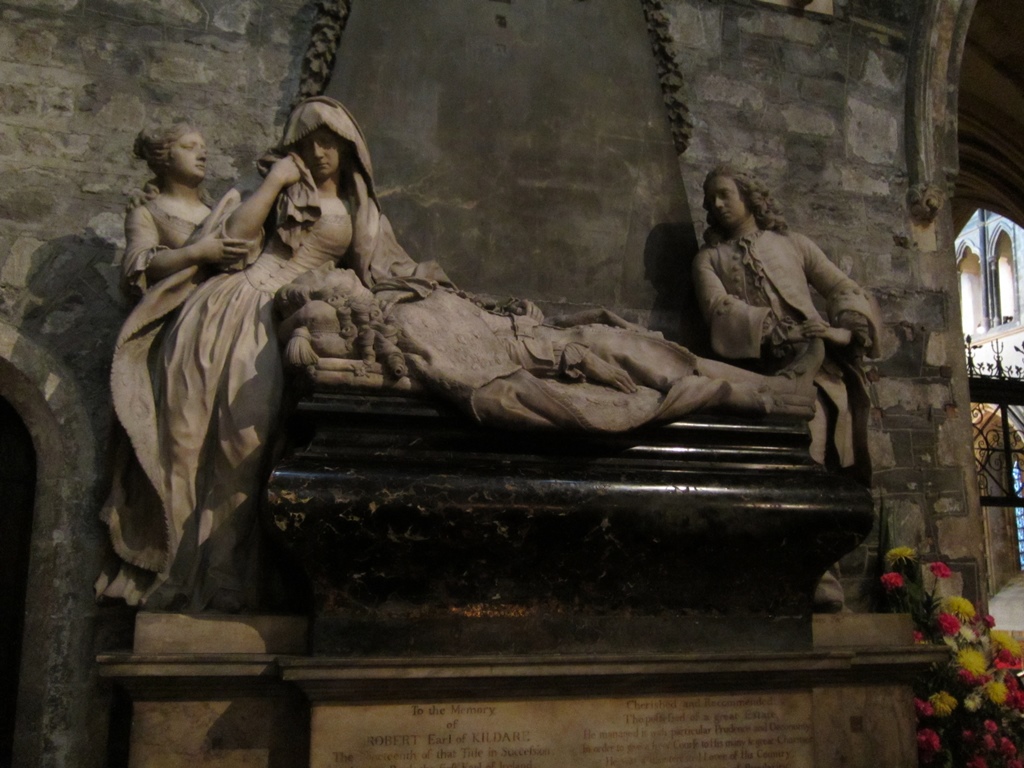
Monument to Robert FitzGerald, Earl of Kildare (1675-1743)
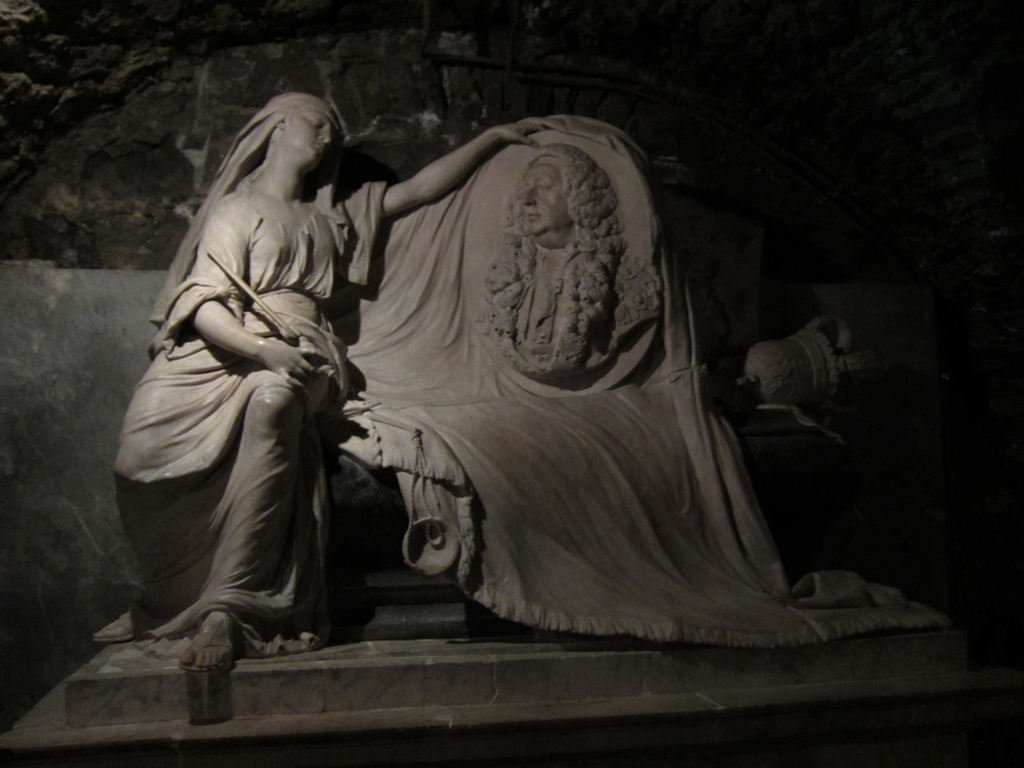
Monument to John Bowes (1691-1767)
The crypt dates back to the 12th Century, and is the largest cathedral crypt
in Ireland or Britain, with a length exceeding 200 feet. The crypt was open
to visitors, including us, and had a number of cathedral artifacts on
display, in addition to the tombs. One of the newest displays during our
visit was a small selection of costumes created for The Tudors
television series (yes, they filmed here too).
The Tudors Costume Exhibit
The church affiliation of Christ Church has been a complicated issue
throughout its history, and remains so to this day. The cathedral began
life as a Catholic church (this was the only game in town for Christians
at the time), but became affiliated with the Anglican Church of Ireland
when Britain went Protestant under Henry VIII. The British Roman
Catholic king James II visited for a high mass in 1690, at which time the
cathedral was Catholic again. But James lost the fight for his throne to
the Protestant William of Orange, so it was back to the Church of Ireland.
But even today, the Roman Catholic Holy See claims that Christ Church is
the rightful seat of its local archbishop, who is instead based in an
acting "pro-cathedral", St. Mary's. To make things even more complicated,
just down the hill and in the same diocese as Christ Church is another
cathedral, St. Patrick's, which has existed since 1191. This is an
unusual situation, as a cathedral is normally the seat of the head bishop
of a diocese. There was some understandable contention and confusion at
first, but eventually an agreement was hammered out (called the Pacis
Compositio) which spelled out which cathedral was responsible for
what (e.g. the cathedrals would take turns burying deceased archbishops,
unless the deceased archbishops took exception). Eventually this evolved
into the present arrangement, in which St. Patrick's is considered the
National Cathedral, and Christ Church has been designated the Cathedral
of Dublin and Glendalough, acting as the seat for the Archbishop of
Dublin.
You can probably guess what our next stop for the day was. Correct! St.
Patrick's down the hill, to see what's what.

